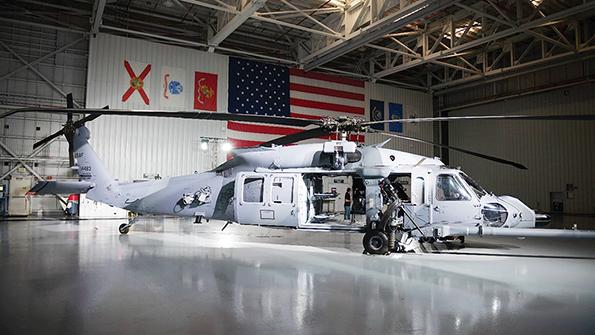HH-60W Live-Fire Testing Begins

The HH-60W Jolly Green II combat search-and-rescue (CSAR) helicopter has begun live-fire testing of its three primary weapons–the GAU-2, GAU-18 and GAU-21.
The 413th Flight Test Sqdn. performed a three-week test at Eglin AFB in Florida of a 7.62mm gatling gun with a 3,000-round-per-minute fire rate, a .50-caliber legacy machine gun with a 650-900-round fire rate, and a .50-caliber newly-design machine gun with a 950-1,100-round fire rate.
The first HH-60W, known as Whiskey 1, is equipped with specialized test instrumentation. This allowed the testers to record stress to the aircraft caused by firing various weapons.
The new helicopter’s aircrew wore special instrumentation that measured the blast effects on their bodies. This is part of a larger Defense Department study to better understand the effects of weapon blast on the human body, specifically as it relates to traumatic brain injury.
Test data will be sent to the Air Force’s Non-Nuclear Munitions Safety Board for evaluation.
Earlier in the summer, the HH-60W completed it first-ever aerial refueling over southern Alabama. Other milestones the program has cleared include radar, weather, and defensive system testing.
Sikorsky began installing HH-60W simulators at multiple Air Force bases about seven months ago. This is a change for the Air Force CSAR community, because the HH-60M has only one full-motion simulator and one stationary simulator at Kirtland AFB in New Mexico. The plan is for HH-60W simulators to be placed at each main operating base.
The HH-60W is a substantial upgrade from the HH-60G, with improved communications and increased survivability with radar, laser and missile warning systems, infrared and radar countermeasures armor and two crew-served weapons.
The Air Force’s program of record is 113 HH-60Ws and the line will manufacture roughly one aircraft each month.